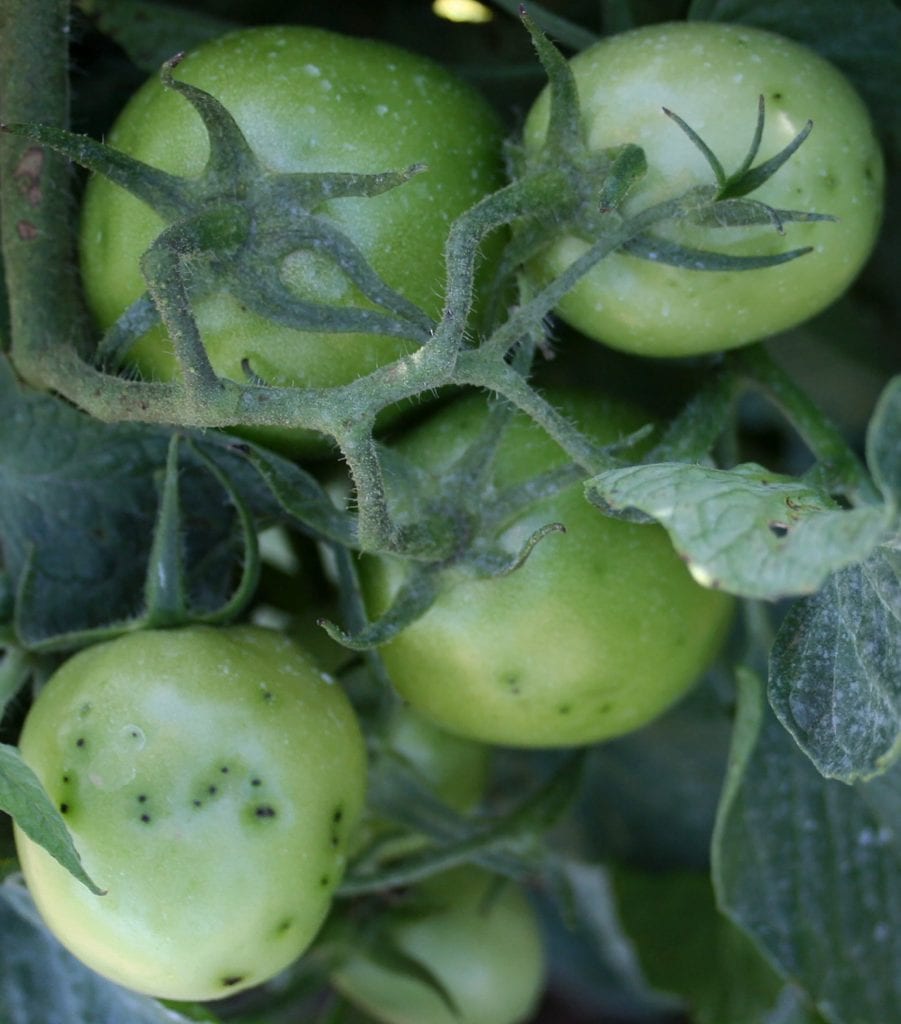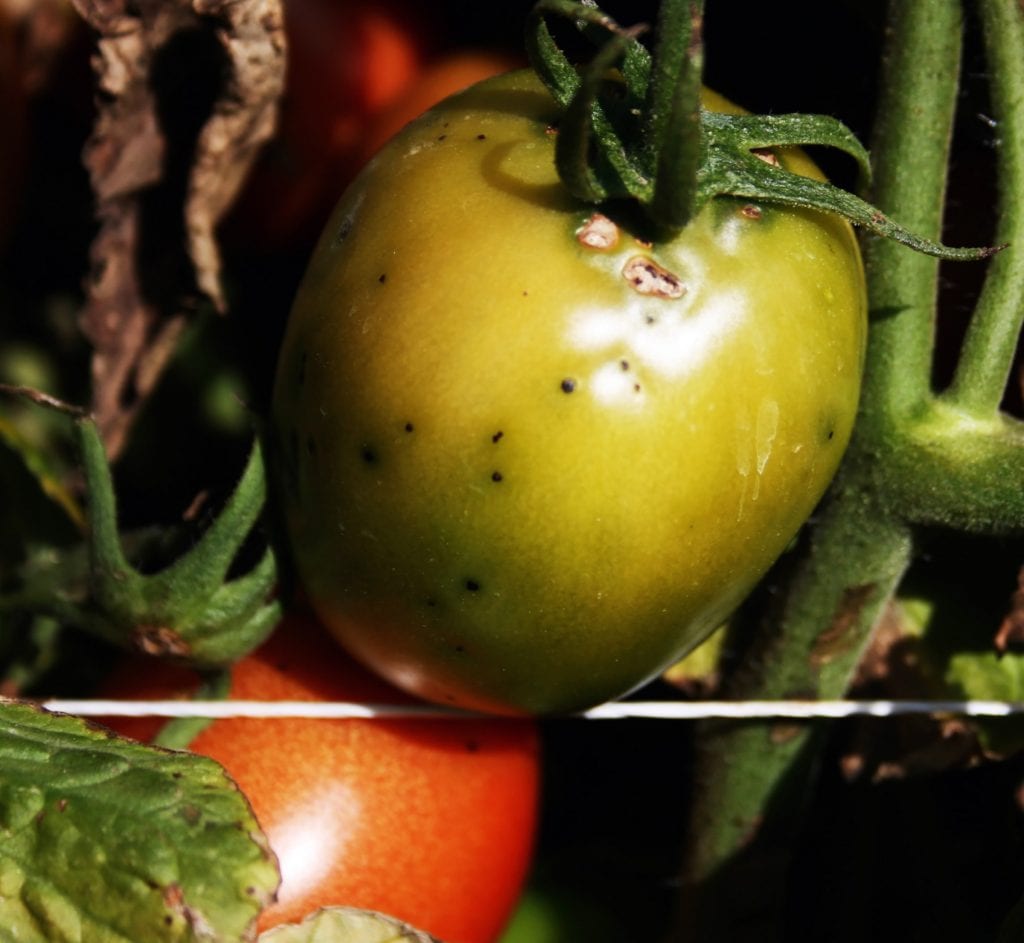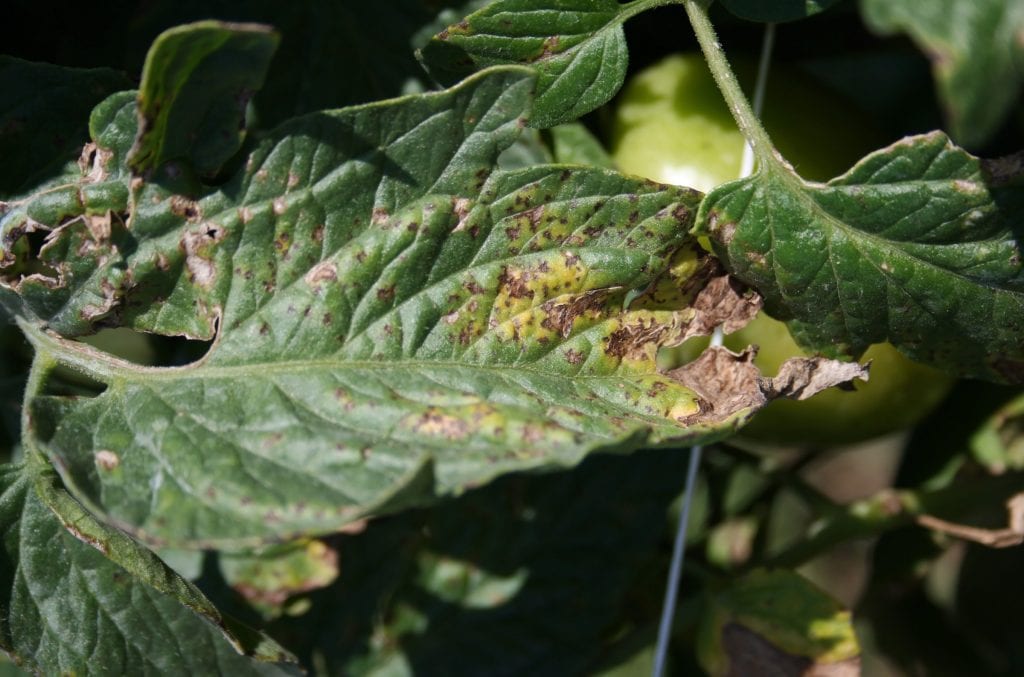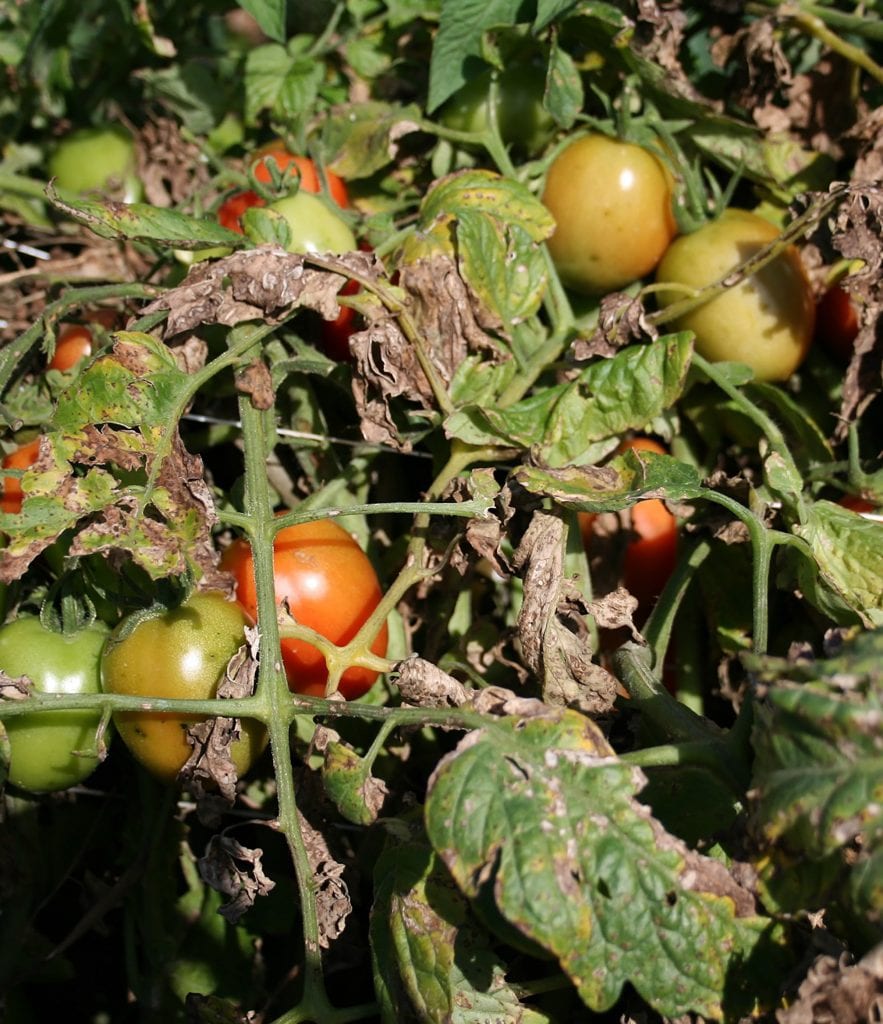Printer-friendly .pdf version of this page.
See also:
- Bacterial speck (LIHREC)
Introduction
Bacterial speck is a common tomato disease that is present in most temperate regions. In New York, there have been several outbreaks recently. Epidemics can develop quickly, resulting in severe tomato losses during unusually cold and wet summer months. Young developing fruits are vulnerable, and the disease results in reduced fruit yield, quality, and plant health.
Causal agent
Bacterial speck is caused by Pseudomonas syringae pv. tomato). The bacterium enters the tomato through natural openings, wounds (roots, stem, or fruits), or from infected seeds. Bacterial speck becomes a severe problem when there are prolonged periods of moisture (high humidity or long dew periods) and cool temperatures (55-77ᵒ F). Under ideal conditions, symptoms appear in about 10 days.
Symptoms
Bacterial speck causes similar symptoms to bacterial spot and canker of tomato. However, discrete differences can allow for the accurate diagnosis of the pathogen. Bacterial speck produces small (1/16 in.) slightly-raised black ‘speck-like’ lesions on the developing fruit that are much smaller than tomatoes with bacterial spot. On tomato leaves, similar lesions to bacterial spot appear except that faint yellow halos surround the lesions and the leaf may show substantial curling. In contrast to bacterial speck, bacterial canker will show excessive wilting, canker development, and prominent ‘bird’s-eye spots’ on fruit.



How the pathogen spreads
Unfortunately, Pseudomonas syringae pv. tomato is capable of thriving on plant debris, seeds, seedlings, weeds, and for short periods in the soil. Therefore, it becomes imperative that clean seed and seedling stocks be used. Experiments have demonstrated that the pathogen is capable of overwintering in plant debris and that the bacterium can serve as a primary source of inoculum for the following growing season. Transplants that originate in greenhouses can be a common way in which the pathogen can spread.

Management
Take preemptive measures to limit the spread of bacterial speck:
- Use certified seed stock & seedling transplants: Make sure you acquire seed and/or seedlings from a certified dealer that uses clean seed and performs a rigorous inspection program. Few resistant varieties are available.
- Sanitize: At the end of the season, sanitize all greenhouses, equipment, flats and trellising stakes.
- Irrigation control: Practice irrigation control to minimize leaf wetness during cooler periods since the bacterium thrives in damp, cool conditions.
- Remain vigilant/scout: Once symptoms are observed remove the diseased plants and a few of the surrounding plants to prevent the pathogen from spreading. If field infections occur, it is best to plow under the areas/fields to prevent spread into surrounding healthy fields.
- Rotate crops: Limit the spread of inoculum from infected soils by practicing three-year field rotations.
- Apply chemical treatments
More information
- For more information, please contact: Chris Smart – cds14@cornell.edu
- This page was created by Martha Sudermann – mas835@cornell.edu


